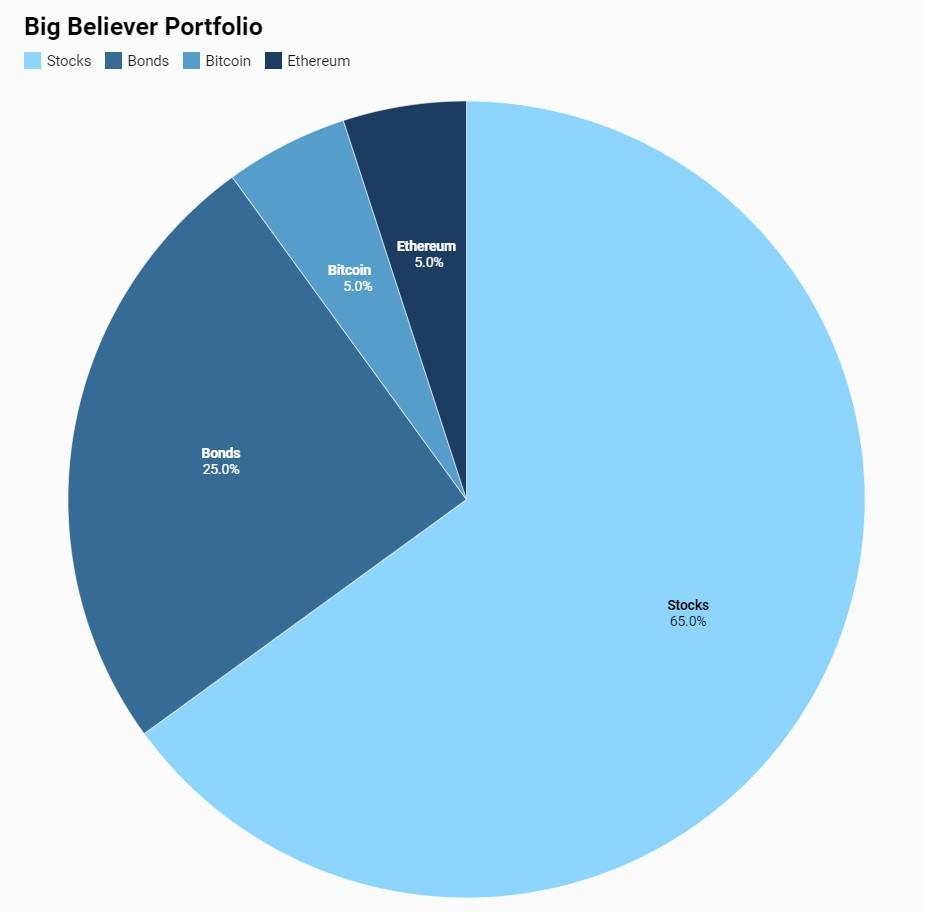
Executive Summary
At Bitcoin Market Journal, we’ve dug deep into questions of long-term crypto investments. A question for us (and, if our inbox is evidence enough, for our readers as well) is how much, exactly, can we afford to invest in crypto?
We’d probably have a different answer if you asked this question regarding traditional stocks and bonds. With crypto, however, we all need to think more strategically about available finances, expenses, and (especially) the relationship between risk and potential reward.
Understanding Cryptocurrency Investing
Francis Bacon wisely said that “Knowledge is power.” This timeless quote applies to many topics–including investing. Knowledge provides the insights we need to make wise decisions for investing and ourselves.
While cryptocurrency operates on different technical infrastructures, crypto markets often operate like any other. That is, you can buy, sell and trade different types of cryptocurrencies, and the price rises and falls with demand.
There are, however, significant differences between traditional and crypto investments:
Strategies for Crypto Investing
When investing in cryptocurrencies, it’s essential that you carefully consider factors like your income, financial goals, and risk tolerance. Once you've taken these into account, you may want to:
- Employ Dollar-Cost Averaging (DCA), a strategy that involves regular investments to reduce the uncertainty associated with market timing.
- Consider allocating a small portion (around 5%) of your overall investment portfolio to cryptocurrencies. The exact proportion will depend on your circumstances and risk tolerance.
- Regularly review and rebalance your portfolio to ensure your investments align with your financial goals and risk tolerance.
Risks in for Crypto Investing
Note there are other risks associated with crypto investing, including:
- Regulatory risk: This pertains to the potential changes in governmental or regulatory policies towards cryptocurrencies. Cryptocurrencies operate in a regulatory gray area in many jurisdictions, and a sudden change in their legal status can drastically impact their value.
- Market manipulation: These may include "pump-and-dump" schemes where organized groups artificially inflate the price of a cryptocurrency to attract unsuspecting investors and then sell off their holdings, causing the price to plummet.
- Cyber theft risk: Cryptocurrencies are digital assets susceptible to hacking, theft, and fraud. If an investor's crypto wallet is compromised, their funds can be stolen, often with little chance of recovery. Consider storing a significant chunk of your cryptocurrency in a hardware wallet — a device designed to securely hold digital assets. Hardware wallets are generally considered safer because they keep your private keys offline and are not easily accessible to hackers.
As high as the risks are, the potential rewards of crypto investing can be just as huge. For example, early adopters of bitcoin have seen unprecedented returns in traditional markets. Cryptocurrencies can also act as a hedge against the traditional financial system during economic uncertainty.
What to Consider when Weighing What You Can Afford in Your Crypto Portfolio
This is a straightforward question for any investment. And, in most cases, there are a couple of major shared concerns across both categories:
- Income: First, look at your income and budget. It's a rule of thumb only to invest money you can afford to lose, which excludes essential expenses like rent, food, or bills. Also, before investing, consider setting aside an emergency fund that covers at least 3-6 months' worth of living expenses in case of unexpected events like a job loss or medical emergency.
- Financial Goals: Are you saving for a house or planning for retirement? Having a clear end goal can make it much easier to stay on track with your investment strategy. It can guide your decisions and keep you focused during market volatility, especially for crypto assets.
One major difference in crypto is risk tolerance. It's vital to assess your tolerance for risk by understanding that with crypto, you can make and lose a lot of money relatively quickly compared to traditional investments. Commensurate with our first rule, weigh the impact a potential loss would cause you. If the financial strain causes considerable stress, consider investing less.
Once you have a firm grasp on your income, risk tolerance, financial goals, and how much you're willing to invest in cryptocurrencies, a strategy you might consider is Dollar-Cost Averaging (DCA), also called “steady-drip investing.” In this investment strategy, you divide the amount you want into equal portions and periodically invest those over time. For instance, instead of investing $12,000 all at once, you might invest $1000 monthly for 12 months.
This investing strategy gives you several advantages:
- Eliminating Uncertainty with Market Timing: It's tough, even for professional investors, to consistently buy low and sell high without burning out. We all can’t be day traders. With DCA, however, you invest the same amount of money at regular intervals, understanding that the highs and lows will balance out over time (depending on the investment asset).
- Promoting Regular Investing: DCA encourages a habit of regular investing, which can help you grow your wealth over time, even if you're only investing a small amount each period. This can prevent bad habits around start-and-stop investing.
Keep in mind that while DCA can be a useful strategy, it does not guarantee profit or protect against loss in a declining market. It just guarantees that you will buy at the “average” price over time, which is still a powerful tool.
Our Investment Strategy
At Bitcoin Market Journal, we advocate for a balanced approach to investing, focusing on value, diversification, understanding the asset, and patience. We've summarized the key points below, but you can dive into our investing approach overview to see how we’ve generated such amazing returns.

Our Principles:
- Invest a fixed amount regularly into a diversified portfolio composed mostly of stocks and bonds, with a small allocation to bitcoin.
- Avoid extreme conservatism or excessive risk. Aim for slow but steady growth by investing in quality assets.
- Look for assets tied to businesses or products that add value. This could mean solving a problem, offering a service, or improving the quality of life.
- Spend time and resources on enhancing your education and skills. Your ability to understand and analyze investment opportunities will pay dividends in the long run.
- Investing is about more than quick wins but long-term growth. Be patient with your investments, and avoid panic selling during market dips.
How to Allocate Crypto in Your Portfolio
Consider dedicating a small portion, say around 5% -10 %, of your overall investment portfolio to cryptocurrencies. However, the exact percentage can vary based on individual factors. For instance, you should allocate a smaller percentage to crypto if you're a risk-averse investor.

As time passes, it's essential to regularly review your crypto investments and adjust your portfolio as needed. Furthermore, as you grow and adapt, you’ll start to look at some of the same metrics that we use to guide our thinking:
Important Metrics
These metrics are often representative of the health and potential of a blockchain project. A great tool to use to track these metrics is TokenTerminal.com.
- Daily Active Addresses: This metric reflects the number of daily users of a crypto asset and can indicate how widely it's adopted.
- Total Revenue: This metric shows how a crypto asset makes money. It can include transaction fees, service fees, or other forms of revenue. Smart investors look for projects that generate the most cash, as it indicates a blockchain project's financial health and profitability potential.
- Total Protocol Revenue: Protocol revenue refers to the money returned to token holders or the project's treasury. It indicates the profitability of the protocol.
- Total Value Locked (TVL): Money held in a project's smart contracts. A high TVL can indicate a high level of trust in the project.
Investor Takeaway
Understand your financial situation and goals. Understand risk. Understand the tools, techniques, and strategies you can deploy to make wise investing decisions. Then, you can know what you can afford to invest in crypto.
The bottom line is that successful crypto investors are informed, patient, and prudent. By clearly assessing your financial situation and your goals–and digging into crypto investing data–you can make more accurate determinations on how to build a portfolio that includes crypto.
Let’s walk this journey together. Join the Bitcoin Market Journal Premium community today!

